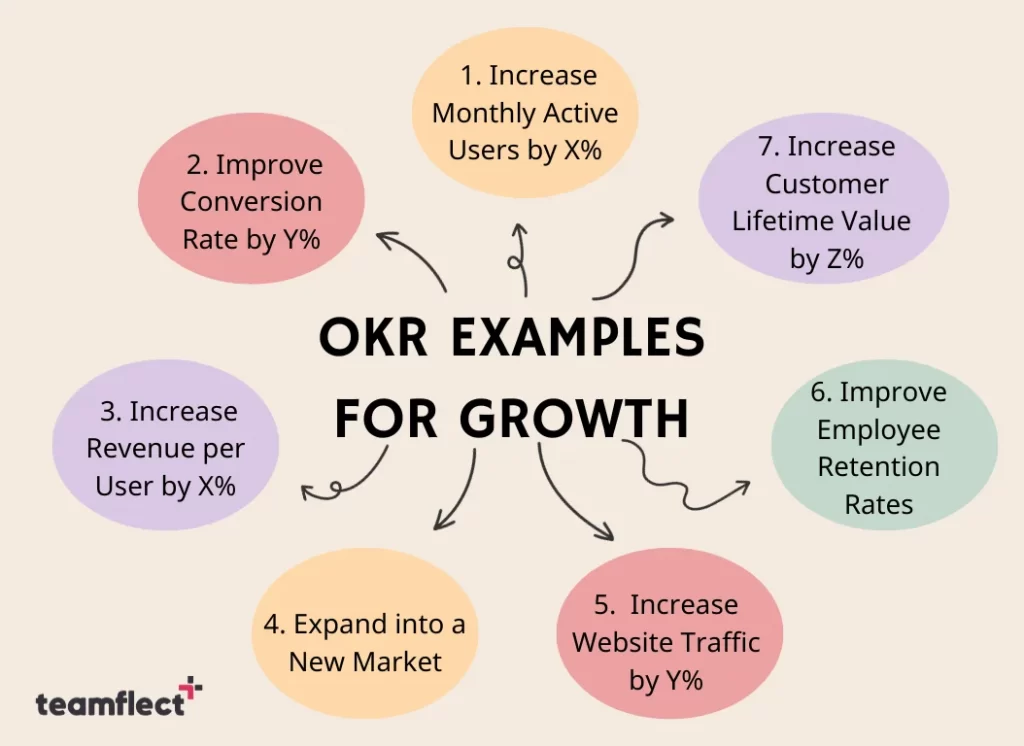In today’s fast-paced and competitive business landscape, setting the right goals—and achieving them—can mean the difference between thriving and merely surviving. That’s where OKRs (Objectives and Key Results) come in. Originating at Intel and popularized by tech giants like Google, OKRs have evolved into a powerful goal-setting framework that helps businesses of all sizes align their vision, measure progress, and drive growth.
If you’re looking for a structured yet flexible approach to scaling your business, here are five key ways OKRs can help your business grow.
1. Align Teams Around a Shared Vision
One of the biggest barriers to business growth is misalignment. Different departments often have their own priorities, timelines, and success metrics—which can lead to duplicated efforts or internal competition. OKRs solve this problem by ensuring everyone in the organization is pulling in the same direction.
An OKR framework starts with a clear Objective—a broad, ambitious goal—and then breaks that down into measurable Key Results. When leadership sets company-wide OKRs and then allows teams and individuals to create their own aligned OKRs, it creates vertical and horizontal transparency.
Example:
-
Objective (Company Level): Become the market leader in online fitness coaching by Q4.
-
Key Result (Marketing): Increase website traffic by 50% through SEO and content.
-
Key Result (Sales): Close 200 new coaching contracts this quarter.
-
Key Result (Product): Launch mobile app version 2.0 with live video features.
Everyone understands how their work ladders up to the big picture. This alignment fosters collaboration, boosts morale, and keeps your entire organization laser-focused on what really matters.
2. Drive Accountability and Ownership
OKRs empower individuals and teams to own their outcomes. Because key results are specific, measurable, and time-bound, there’s no ambiguity about what success looks like. Each team member understands what they’re accountable for—and has the freedom to figure out how to get there.
This clarity builds a culture of trust and performance. Instead of micromanagement, leaders can shift their focus from “how are you doing this?” to “how can I support you in reaching this goal?” It gives your workforce more autonomy while still maintaining structure and accountability.
When employees feel ownership over their objectives, they’re more engaged, motivated, and likely to go above and beyond to achieve results.
3. Encourage Ambition Without Fear of Failure
One of the unique elements of OKRs is the idea of stretch goals—objectives that are deliberately ambitious, sometimes even uncomfortable. Rather than punishing teams for not hitting 100%, OKRs encourage aiming high. If you hit 70% of an ambitious goal, it’s often a bigger win than 100% of a safe one.
This philosophy encourages innovation, creativity, and a willingness to take risks—all crucial traits for growth. It shifts the company mindset from “what’s safe and doable?” to “what would be game-changing if we pulled it off?”
Growth comes from getting outside your comfort zone. OKRs help your team do exactly that, in a structured and healthy way.
4. Enable Data-Driven Decision Making
OKRs are inherently quantitative, requiring measurable results that track progress. This makes it easier to assess what’s working and what isn’t in real-time. Rather than relying on gut feeling or anecdotal feedback, teams can base their decisions on hard data.
Are you behind on a key result? What’s causing the bottleneck? Is it lack of resources, a flawed strategy, or external factors? With this insight, you can quickly adapt, reallocate resources, or pivot to a better approach. OKRs create a feedback loop that promotes continuous improvement and agile thinking.
And during review periods—whether quarterly or bi-annually—you’ll have a data-rich overview of where the company made progress and where it needs to course correct.
5. Foster a Culture of Transparency and Collaboration
OKRs aren’t created in a vacuum. One of the key practices is making OKRs visible—whether that’s through internal dashboards, meetings, or OKR tracking tools. When every department’s goals are transparent, it reduces silos and opens the door for cross-functional collaboration.
For example, if the product team sees that marketing is pushing a new campaign targeting Gen Z, they may proactively adjust user interface design to appeal to that demographic. Or if sales notices customer satisfaction KPIs are slipping, they might partner with support to improve onboarding.
Transparency builds trust. It promotes conversations that might not otherwise happen and creates a workplace where employees are aligned not just on what they’re doing—but why they’re doing it.
Final Thoughts
OKRs are more than just another business acronym. When implemented thoughtfully, they become a powerful engine for business growth. From aligning teams and promoting accountability to fostering innovation and encouraging data-driven decisions, the benefits are clear and measurable.
Of course, OKRs are not a magic bullet. They require buy-in from leadership, a culture that values continuous improvement, and regular check-ins to stay on course. But for organizations ready to scale smartly, strategically, and sustainably, OKRs offer a tested and proven framework to unlock their full potential.
If you haven’t yet adopted OKRs in your business, now might be the time to do so. After all, growth doesn’t just happen—it’s designed.
